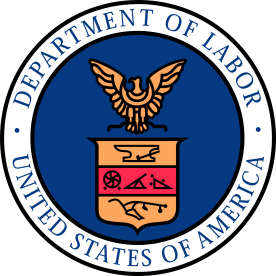A significant amount of legal activity has taken place recently in the area of joint employment. Joint employment exists when more than one entity is deemed to be a worker’s employer. Typically, a direct employer and a secondary business – the latter of which did not hire or pay the putative employee but nonetheless benefits from his/her services – can together create a joint employment relationship. As a result, the secondary business may be legally obligated to the employee under various labor and employment statutes. Examples of joint employers might be franchisors and companies that use staffing agencies or have interlocking operations with another entity.
The U.S. Department of Labor (DOL) recently ventured into this arena by proposing a new standard for determining whether joint employment relationships exist under the Fair Labor Standards Act (FLSA). This “Joint Employer” rule will go into effect on March 16, 2020 and narrow a far more expansive Obama administration interpretation of “joint employer.” While the DOL has not substantively revised the standard for determining whether a joint employment relationship exists since 1958, in 2017 the Obama administration provided an informal interpretation redefining when businesses qualify as joint employers under the FLSA.
This Obama administration interpretation subjected franchisors to significant potential liability for their franchisees’ FLSA violations. However, this informal interpretation did not undergo the official rulemaking process. The new Joint Employer rule narrows joint employer liability with the creation of a four-factor test, which calls for consideration of whether the alleged employer has the power to (1) hire or fire the employee, (2) supervise and control the employee’s work schedules or conditions of employment, (3) determine the employee’s rate and method of payment, and (4) maintain the employee’s employment records. The final rule specifically states that the maintenance of employment records alone will not lead to joint employment status and grants discretion to the courts to weigh each factor and determine whether on balance the facts support a joint employment relationship.
In conjunction with the DOL’s proposed rule, the National Labor Relations Board (NLRB) and Equal Employment Opportunity Commission (EEOC) have also been attempting to revise their respective tests for joint employment status. Since 2018, the NLRB has been attempting to revise its joint employer standard to an employer-friendly standard, where an employee may only be a joint employer if the employer exercises direct (as opposed to indirect) control over the terms and conditions of one’s employment. The EEOC has also announced that the agency intends to reconfigure its joint employment rule. Though both the EEOC and NLRB announced they would be issuing these new proposed rules in December 2019, neither agency has yet issued its proposed rules. If successful, these moves would align the three agencies (DOL, NLRB, and EEOC) that interpret labor and employment rules, making it clear to employers what liability they hold in each realm – whether that be wage-and-hour claims, discrimination/harassment, or collective bargaining.
Although the DOL has made great strides in the race toward limiting when two companies should be considered a joint employer, courts may still consider challenges to it. Critics of the final rule say that it steps beyond the agency’s power and that employers will need to see how and whether courts defer to the DOL’s interpretation and standard.
In sum, the new DOL Joint Employer rule will allow certain businesses, especially franchisors, to potentially avoid liability when their franchisees are accused of violating the FLSA. Here are some takeaways, in light of the DOL’s new Joint Employer rule:
-
Franchisees and other direct employers will bear the brunt of the burden to comply with the FLSA.
-
Limit direct control and supervision over workers to avoid joint employer liability.
-
Entities like franchisors, who benefit from the work of another’s employees, may still exercise some limited involvement in the overall operations of the related business, like providing sample employee handbooks or policies and procedures manuals. Depending on the particular circumstances involved and the particular weight given to any one factor, an entity that is not responsible for the day-to-day operations of the other company – including hiring and firing of employees, setting the rates and methods of pay, record maintenance, or supervising and controlling the conditions of employment – should have a credible defense to an allegation of joint employment.







 i
i

